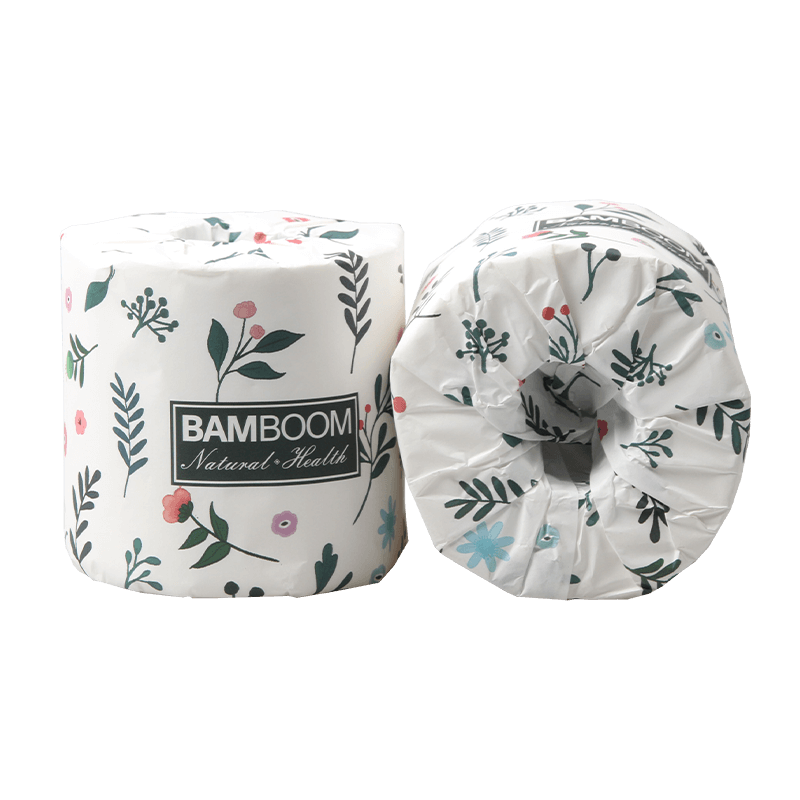Bamboo vs. Recycled Toilet Paper: Which is the More Sustainable Choice
As consumers become more eco-conscious, the debate over which toilet paper is better for the environment, bamboo or recycled, has gained more and more attention. Both bamboo and recycled toilet paper offer alternatives to conventional wood-pulp toilet paper, which often relies on virgin forest resources. However, these two sustainable choices come with distinct advantages and limitations. Understanding the differences between bamboo vs. recycled toilet paper can help consumers make informed decisions aligned with their values and needs.
Understanding Bamboo Toilet Paper
Bamboo toilet paper is an eco-friendly alternative to traditional toilet paper made from virgin wood pulp. It is produced from the fast-growing bamboo plant, which is known for its sustainability and minimal environmental impact. Bamboo is a highly renewable resource, making it an attractive option for consumers looking to reduce their ecological footprint.

How Bamboo Toilet Paper is Made
The production process begins with harvesting bamboo stalks, which are then chipped into small pieces. These chips are processed into pulp using environmentally friendly methods that often avoid harsh bleaching agents. The pulp is rolled into sheets, dried, and cut into rolls. Many eco-conscious manufacturers also use plastic-free packaging and opt for carbon-neutral production methods.
Benefits
- Sustainability: Bamboo is one of the most sustainable materials available. It is a grass, not a tree, and it grows rapidly—up to 4 feet per day in some species. It also requires minimal water and pesticides to grow, making it a greener alternative to traditional wood-based toilet paper.
- Biodegradability: Bamboo toilet paper is highly biodegradable, making it safe for septic systems and the environment. It breaks down quickly and naturally, which reduces the risk of clogs in plumbing systems compared to some other products.
- Softness and Comfort: Bamboo toilet paper is often praised for its softness, which is comparable to high-end, virgin paper brands. The fibers in bamboo are naturally strong and soft, making it gentle on the skin and comfortable to use.
- Reduced Chemical Use: Many bamboo toilet paper brands are chlorine-free, ensuring that harmful bleaching chemicals are not used in the production process. This makes bamboo toilet paper a hypoallergenic choice for those with sensitive skin or allergies.
- Minimal Water Usage: Bamboo requires significantly less water to grow compared to trees, which helps conserve water resources during the manufacturing process. It is also more water-efficient when processed into paper compared to other types of wood-based pulp.
- No Deforestation: Bamboo farming doesn’t contribute to deforestation, unlike traditional wood pulp paper production. This makes bamboo toilet paper a more environmentally responsible option, as it doesn’t contribute to the destruction of forests and ecosystems.
Limitations
- Cost: Bamboo toilet paper tends to be more expensive than conventional toilet paper made from wood pulp. The cost can be a barrier for some consumers, although the price gap has been narrowing as demand for bamboo-based products grows and production methods become more efficient.
- Transportation Emissions: While bamboo is a highly sustainable resource, much of the bamboo used in toilet paper production is grown in regions like Asia. The environmental benefits of bamboo can be somewhat offset by the emissions associated with transporting it over long distances to markets in North America, Europe, and elsewhere.
- Limited Availability: Although bamboo toilet paper is gaining popularity, it is still less widely available than traditional toilet paper brands. It may be harder to find in some areas, though many eco-friendly retailers and online stores are expanding their offerings of bamboo-based products.
- Processing and Packaging: While bamboo itself is a renewable resource, the processing of bamboo into toilet paper can involve energy and water use, particularly if the process includes chemical treatments for softening or bleaching. Additionally, some bamboo toilet paper brands still use plastic wrapping, though this is gradually changing as consumers demand more sustainable packaging options.
- Softness Variability: While bamboo toilet paper is generally soft, the quality can vary between brands. Some bamboo toilet papers may feel rougher or not as strong as others, depending on the manufacturing process and amount of chemical treatment used during production.
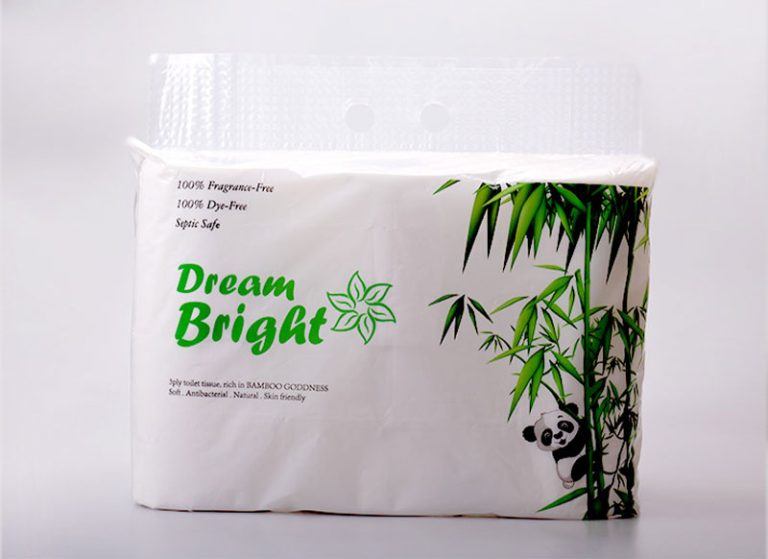
Understanding Recycled Toilet Paper
Recycled toilet paper is a sustainable alternative to traditional toilet paper, made from post-consumer recycled paper. This type of toilet paper helps reduce the environmental impact of deforestation and paper production by reusing paper that would otherwise end up in landfills. By using recycled materials, this product helps conserve natural resources, reduce waste, and lower the carbon footprint associated with manufacturing new paper.

How Recycled Toilet Paper is Made
Recycled toilet paper is produced by taking used paper products, such as office paper, cardboard, newspapers, and other discarded paper, and processing them into pulp. The paper is first collected and sorted to remove any contaminants, such as plastic, ink, or other non-paper materials. Once cleaned, the paper is mixed with water to create a slurry, which is then processed into pulp.
This pulp is then bleached (usually with chlorine-free processes) and refined to create a soft and usable material for toilet paper. After the pulping process, the paper is rolled, dried, and packaged as toilet paper.
Recycled toilet paper can come in various grades based on the amount of post-consumer recycled material it contains, with higher-quality products featuring more recycled content and less virgin material. Some brands also focus on maintaining softness and strength by blending recycled paper with a small amount of virgin pulp, though many focus on 100% recycled content.
Benefits
- Environmental Sustainability: The most significant benefit of using recycled toilet paper is its environmental impact. By using post-consumer recycled materials it reduces the demand for virgin wood pulp, which helps to preserve forests and ecosystems. Recycling paper also uses less water and energy compared to producing new paper from wood pulp, making it an eco-friendly alternative.
- Waste Reduction: Recycled toilet paper helps divert paper waste from landfills, reducing the overall amount of waste that needs to be managed. By giving old paper a second life, recycled toilet paper helps promote a circular economy, where materials are reused rather than disposed of.
- Lower Carbon Footprint: The recycling process typically requires less energy and water than manufacturing virgin paper, which helps lower the carbon footprint of recycled toilet paper. Additionally, using recycled paper can cut down on transportation-related emissions since the raw materials are already processed and can often be sourced locally.
- Chemical-Free Options: Many recycled toilet paper brands use chlorine-free bleaching processes, reducing the harmful chemical use in production. This makes recycled toilet paper a healthier choice for those concerned about the chemicals present in traditional toilet paper, which may affect sensitive skin or the environment.
- Cost-Effective: Recycled toilet paper is often more affordable than premium, virgin-paper alternatives. As it uses post-consumer paper, which is less expensive to source than fresh wood pulp, the cost of production can be lower. This means that recycled toilet paper can be an economical choice for households seeking to reduce their environmental impact without significantly increasing their budget.
Limitations
- Texture and Softness: While many recycled toilet paper products have improved in softness over the years, some may still feel rougher compared to their virgin counterparts. Recycled fibers can be shorter and weaker, which can affect the texture and comfort of the product. However, higher-end brands often blend recycled content with virgin fibers to improve softness and strength.
- Limited Availability: Recycled toilet paper is not always available in every store or region. Depending on your location, it might be harder to find than more conventional brands. However, it is becoming increasingly available in eco-friendly stores and online retailers.
- Bleaching Process: Although many recycled toilet paper brands use chlorine-free bleaching processes, some lower-quality products may still use harsh chemicals to bleach the paper. It’s important to look for products that are labeled as chlorine-free or have other certifications to ensure they are processed in an environmentally responsible way.
- Strength and Durability: While recycled toilet paper is generally strong enough for everyday use, it may not be as durable as virgin toilet paper. Some users may find that recycled toilet paper is more prone to tearing, especially if it is made from lower-grade recycled materials.
- Potential Contaminants: Though most recycled toilet paper is thoroughly processed and cleaned, some brands may still have traces of inks, dyes, or adhesives from the original paper sources. If you’re sensitive to these chemicals, it’s essential to check the product’s labels or certifications to ensure it’s free from harmful substances.
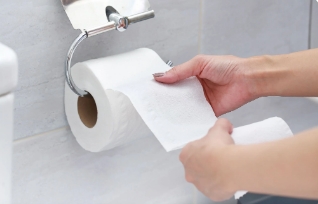
Key Differences Between Bamboo vs. Recycled Toilet Paper
This chart compares the key differences between bamboo toilet paper and recycled toilet paper, offering insights into their sustainability, comfort, cost, and availability.
| Aspect | Bamboo Toilet Paper | Recycled Toilet Paper |
| Material Source | Made from bamboo, a fast-growing grass. | Made from post-consumer recycled paper (e.g., office paper, newspapers). |
| Sustainability | Bamboo is a renewable resource that grows quickly, with minimal water and no pesticides. | Reduces waste by recycling paper products and uses less energy and water than virgin paper. |
| Softness | Generally soft, due to the smooth nature of bamboo fibers. | Can be rougher, depending on the recycling process. Some brands offer soft options, but it may not match bamboo in comfort. |
| Strength | Strong, durable, and resistant to tearing. | Often strong, but may be slightly less durable compared to bamboo. |
| Environmental Impact | Lower carbon footprint in production, but shipping bamboo globally can add emissions. | Lower overall environmental impact due to less energy and water use, with a focus on local recycling. |
| Price | Typically more expensive due to the production and shipping process. | Usually more affordable than bamboo toilet paper. |
| Availability | Gaining popularity but may not be as widely available as recycled options. | Widely available in many stores and brands. |
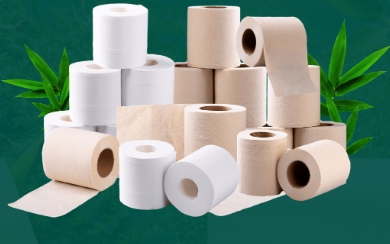
Key Factors to Consider for Choosing Between Bamboo vs. Recycled Toilet Paper
1. Environmental Impact
Bamboo toilet paper is often considered highly sustainable due to bamboo’s rapid growth rate and minimal resource requirements. Bamboo is a renewable resource that can be harvested every few years without needing to be replanted, unlike trees that take decades to mature. However, the environmental impact of transporting bamboo from its primary growing regions in Asia can offset some of its benefits, particularly when factoring in shipping emissions.
Recycled toilet paper is made from post-consumer waste, which helps reduce waste in landfills and limits the need for virgin wood pulp. The environmental impact of producing recycled paper can vary depending on the recycling process, but it generally requires less energy and water compared to producing paper from virgin pulp. However, some chemicals from inks and dyes can remain in the final product, though these are usually minimal with modern processing.
2. Sustainability
Bamboo is a highly sustainable option, as it regrows quickly and can be harvested without causing long-term environmental harm. The natural growth cycle of bamboo contributes significantly to reducing deforestation, making it a strong choice for eco-conscious consumers.
Recycled toilet paper is also sustainable since it helps reduce paper waste and cuts down on the demand for virgin pulp. It can be recycled multiple times, contributing to a circular economy. However, the quality of recycled fibers degrades over time, meaning new fibers or virgin pulp might need to be added to maintain strength and quality in recycled paper products.
3. Cost
Bamboo toilet paper is typically more expensive than recycled toilet paper. This price difference is largely due to the costs associated with bamboo farming, production, and shipping. Bamboo toilet paper can be viewed as a premium product because of the additional expenses involved.
Recycled toilet paper is generally more affordable and widely available. The recycling process is less resource-intensive compared to growing bamboo, so the final product tends to be cheaper, making it a more budget-friendly option.
4. Softness and Comfort
Bamboo toilet paper is known for its softness, often compared to premium, virgin paper brands. It offers a smooth and gentle feel, making it ideal for those seeking comfort during daily use. The fibers in bamboo are naturally strong yet soft, which results in high-quality, luxurious toilet paper.
Recycled toilet paper, depending on the quality and brand, can sometimes feel rougher, especially if made from lower-grade recycled fibers. However, many premium recycled paper brands focus on creating softer versions, so comfort can vary. Generally, recycled paper may not feel as plush as bamboo toilet paper but is still functional for everyday use.
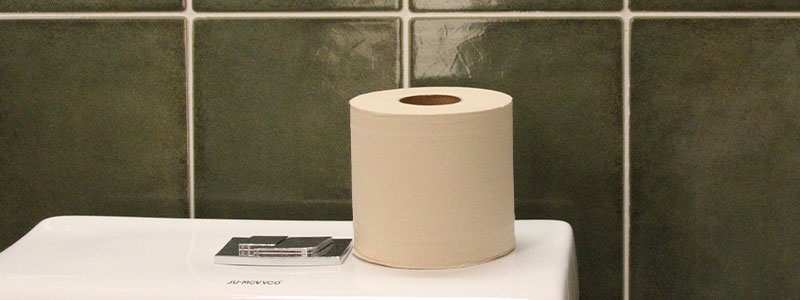
5. Biodegradability
Both bamboo toilet paper and recycled toilet paper are biodegradable, which makes them safe for septic systems and environmentally friendly when disposed of. Bamboo toilet paper tends to decompose faster due to its natural fibers, breaking down more quickly when flushed or composted.
Recycled paper also biodegrades, but the process can take slightly longer depending on the amount of ink, dyes, and chemicals used in the recycling process. While still safe for septic systems, recycled paper may take longer to break down compared to bamboo toilet paper.
6. Chemical Usage
Bamboo toilet paper is typically free from chlorine bleach, dyes, and fragrances, especially when marketed as an eco-friendly product. This makes it a hypoallergenic choice for those with sensitive skin or allergies. The natural processing methods for bamboo help to reduce the exposure to potentially harmful chemicals.
Recycled toilet paper is often processed using chlorine-free bleaching methods, but some brands may still use recycled paper that contains chemical residues from previous printing or dyes. While many recycled toilet paper brands are free from these harsh chemicals, it’s essential to check labels to ensure that they are certified for being free from chlorine or harmful substances.
7. Availability
Recycled toilet paper is widely available and stocked in most supermarkets, making it easy to find. It has become a standard choice for environmentally conscious consumers and is often priced more competitively than bamboo toilet paper.
Bamboo toilet paper, while growing in popularity, is still less commonly found in stores compared to recycled paper. However, it is increasingly available in eco-friendly retailers and online stores. The availability of bamboo toilet paper might depend on your location and access to sustainable products.
8. Packaging
Many bamboo toilet paper brands focus on eco-friendly packaging, often using plastic-free, biodegradable, or recyclable materials. This makes bamboo toilet paper a solid choice for consumers looking to reduce their overall plastic waste.
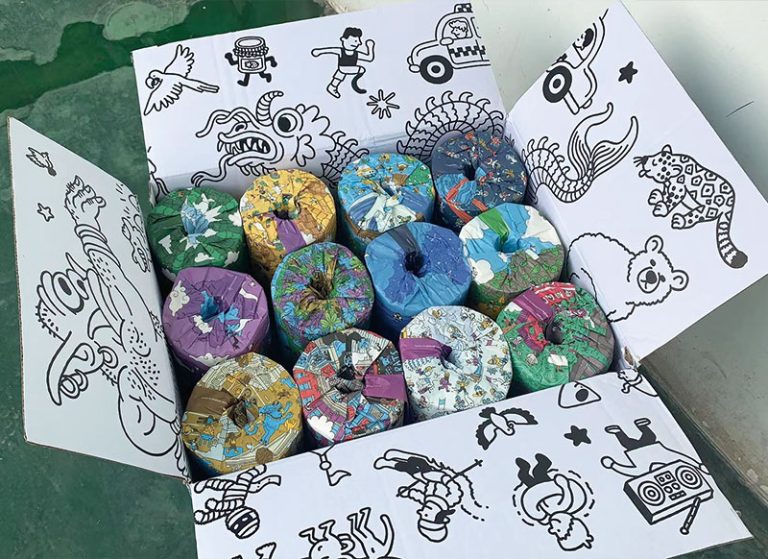
Recycled toilet paper is also often sold with environmentally conscious packaging, but the packaging material and sustainability of recycled paper products can vary depending on the brand. Some brands may still use plastic wraps, though many are shifting toward paper or compostable packaging options.
Summary
- If you prioritize comfort, strength, and a renewable raw material, bamboo toilet paper is an excellent option.
- If your focus is on reusing existing materials, reducing waste, and keeping costs lower, recycled toilet paper may be the better choice.
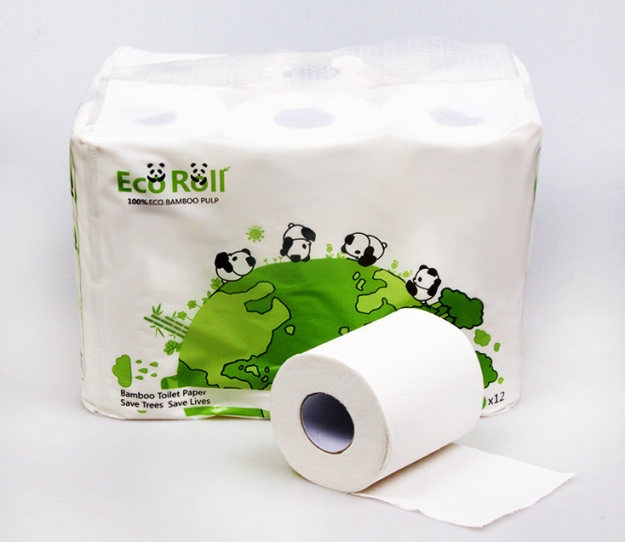
Final Thoughts
The decision between bamboo toilet paper and recycled toilet paper depends on your personal preferences, budget, environmental priorities, etc. Both contribute to reducing deforestation and environmental degradation compared to traditional toilet paper. No matter which you choose, making the switch from virgin fiber paper is a significant step toward a more sustainable lifestyle.

